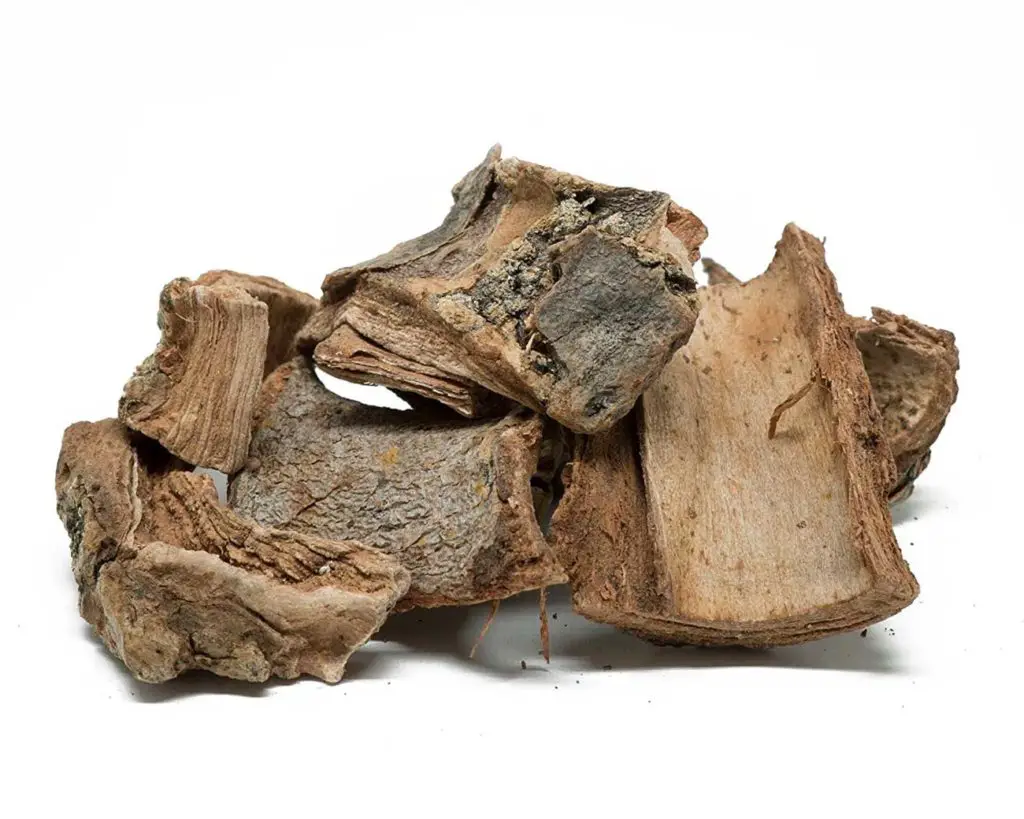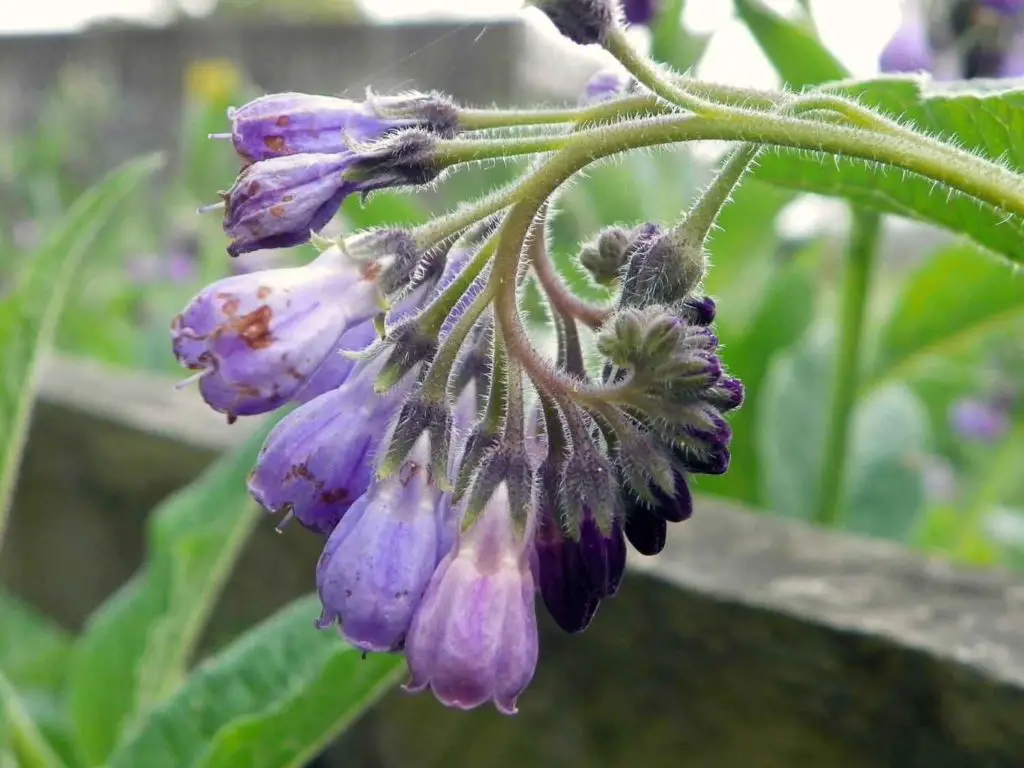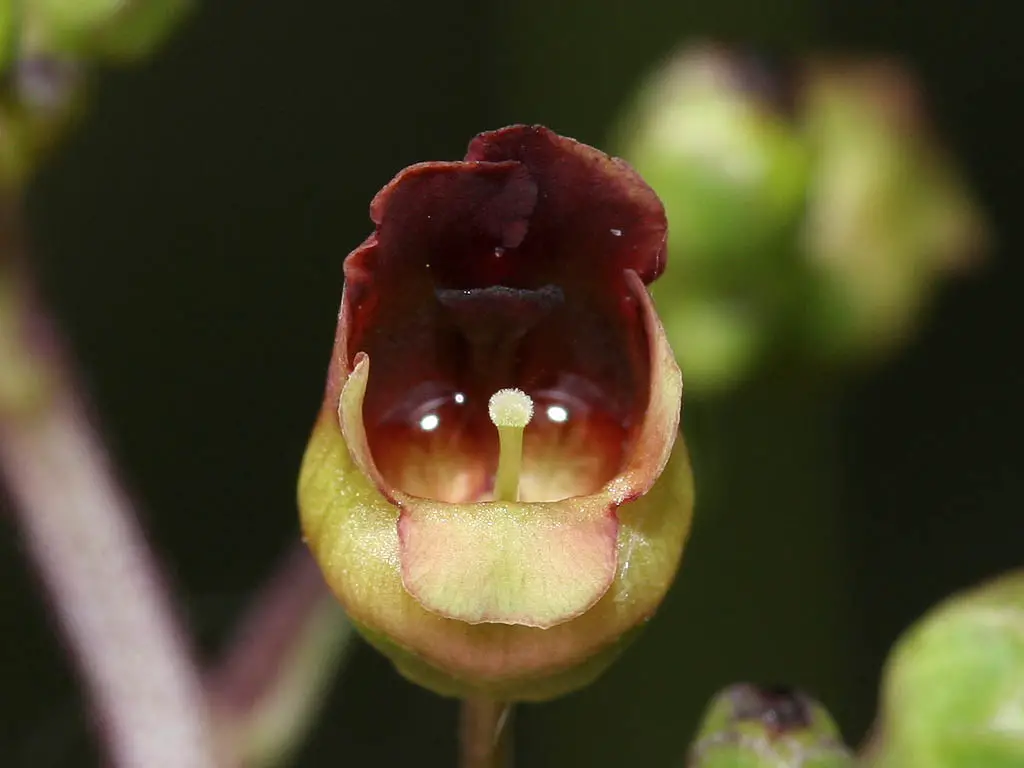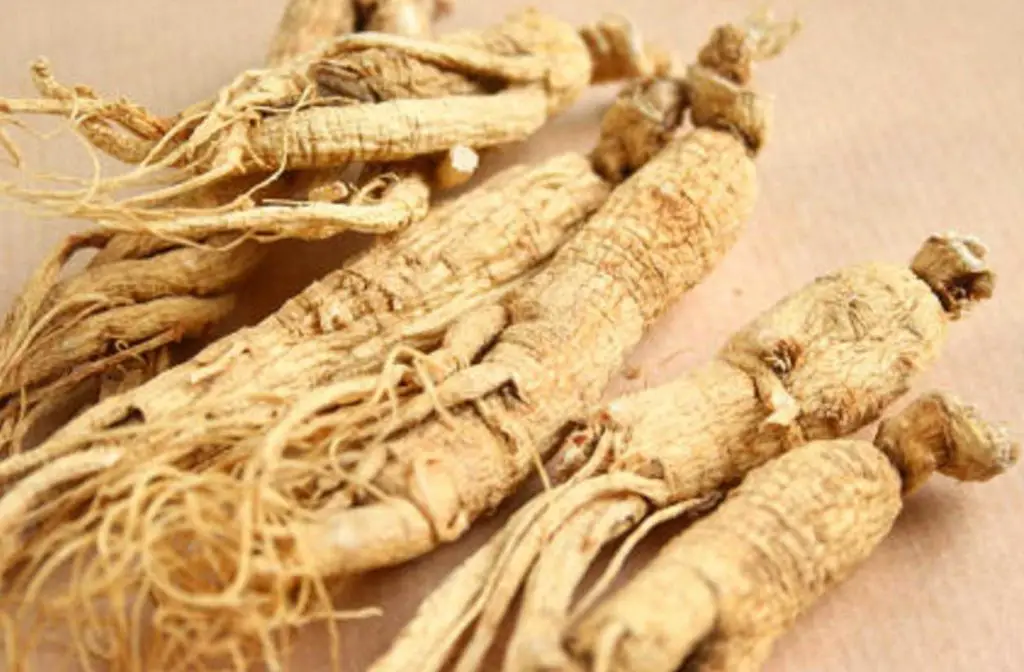What is Cuachalalate?
Cuachalalate is a medicinal plant that hails from Mexico where it is also called Cuachalalá, volador, palo santo, cascara, juliana adstringens, and its scientific name Amphipterygium adstringens. This tree grows in tropical forests and has flowers that bloom between July and August. Following the blooming season, the tree bears fruit until January. The male and female trees do look different and produce distinct flowers, and in some instances they grow in separate regions. However, the tree is not known for its fruit, and it is the bark that is often sought for medicinal purposes. It is said to have a mild flavor when steeped into a tea, and some even say it has a deep, chocolate flavor that makes for a delicious brew.
In Mexico, Cuachalalate is extremely popular and is considered to be a great treatment for many conditions. Because it is so highly desired, the plant was over-harvested to the point where it went locally extinct in many areas of Mexico. Because the bark is the part of the tree that is consumed, the tree must be cut down in many instances in order to be harvested, compared to a leaf or fruit herbal supplement that can repopulate seasonally. As of 2004, Amphipterygium adstringens was placed on the endangered species list. However, local growers are working to repopulate the plant and supply customers with the medicinal bark. Although it is mainly used by residents of Mexico, it is available to purchase worldwide.

Traditional uses dictate that Cuachalalate is best used to treat digestive issues, like colitis and stomach cancer, and to promote oral health. Some even suggest that the plant is a great “cure all” and can even help with more specific issues like malaria and kidney disease. While the effects of Cuachalalate have not been evaluated in humans, several studies have been conducted on the extracts of the plants in either in vitro studies or animal studies. That work suggests that there may be some benefits for human health and wellness, and many suggest that human studies need to be performed.
Cuachalalate Benefits and Uses
Colitis
Many people use Cuachalalate to treat digestive issues, like those associated with colitis. That benefit was evaluated in a study conducted in 2005 when a methanol extract was taken from the plant and administered to rats. That study revealed that even in low doses, the extract can protect the gastric mucosa from damage. The researchers suggested that Cuachalalate may be effective for treating digestive issues due to its anti-inflammatory properties which sooth the digestive tissues. In a later study published in 2007, more research was conducted showing that Cuachalalate may have a direct effect on colitis, gastritis, and peptic ulcers. In that study, Cuachalalate showed to have an anti-microbial activity against Helicobacter pylori, the bacteria that is usually the cause of many digestive issues. While that bacteria is normally present in the digestive tract, large amounts can cause gastric discomfort.

Weight Loss
Although it has not been scientifically evaluated yet, there are many Cuachalalate supplements available that are designed to promote weight loss. Many people claim that incorporating this tea into their regular routine helped to promote digestion, which in turned helped with their weight loss. Some think that drinking a Cuachalalate tea is the perfect way to detox as well, which helps to jump start a diet plan. By treating stomach issues, the plant may also help with weight loss by reducing bloat. Many formulas designed to promote weight loss also contain other substances that are also thought to promote weight loss, like black pepper.
Cancer
Of its many traditional uses, Cuachalalate is said to be beneficial for people with cancer, and those effects have been studied since the 1960’s. In one of the earliest studies, mice with mammary adenocarcinoma were treated with plant extracts. At the end of the experimental period, the growth of tumors was shown to be inhibited by the compounds present in the plant extract. Tumor inhibition was also confirmed by another isolated study conducted in 2011. This effect was studied more recently in 2013 when a group of scientists evaluated the aqueous extracts from the plant, and that extract seemed to have an effect on the cellular immune system of a group of rats with lymphoma. By bolstering the immune system, Cuachalalate may help the host fight their own cancer. However, more work still needs to be conducted to determine the effects of Cuachalalate on human cancer. The results are promising though, and many researchers hope to make an anti-cancer treatment using Cuachalalate because it does not cause severe side effects like many other cancer treatments available today. However; do not try and treat Cancer with Cuachalalate without the blessing of your oncologist.
Anti-Inflammatory
Aside from the study conducted on digestive inflammation on rats (see Colitis), more research reveals that Cuachalalate has anti-inflammatory agents. A study conducted in 2004 evaluated the properties of both the aqueous and hexane extracts of the plant in laboratory animals. The results showed that both extracts reduced inflammation, but they work through different mechanisms to do so. This leaves much potential for Cuachalalate to be used as an anti-inflammatory therapeutic agent that can be targeted for various types and sources of inflammation.
Anti-Microbial
As previously mentioned, Cuachalalate is known to reduce inflammation, and there is evidence to suggest that the plant works to reduce inflammation by acting as an antimicrobial agent. Not only can Cuachalalate reduce the presence of the ulcer-inducing bacteria Helicobacterpylori (see colitis), but other microbes as well. A study published in 2015 looked into the in vitro effects of the methanol extract from the plant on several other microbes, including Streptococcus mutans, Porphyromonas gingivalis, Aggregatibacter actinomycetemcomitans, Candida albicans, and Candida dubliniensis. The extract reduced the activity of all those microbes to some extent, and the researchers suggested that this plant may be promising for future treatments for oral diseases (see section below), digestive issues, and even cancer.
Dental Care
The anti-microbial activity seen in several experiments also explains why Cuachalalate makes for a fantastic oral hygiene treatment. In fact, the plant has been used for centuries to treat cavities, tooth pain, and other dental issues. The same 2015 study that established Cuachalalate as an antimicrobial plant also noted that many of the bacteria tested over the course of that research are responsible for issues like periodontal disease, gingivitis, and cavities. By halting and preventing the spread of those bacteria, the plant helps to maintain good oral hygiene and cavity-free teeth.
Skin
Historically, Cuachalalate has been used as a topical treatment for lesions, wounds, and other ailments of the skin. While this has not been evaluated in any study yet, many people say that it is safe enough to even use on children, particularly babies’ diaper rash. Adults may use Cuachalalate as well to treat their skin, and it can even be used to treat more severe conditions like boils and abscesses, mild conditions like acne, and anything in between.
UV Protection
Not only can Cuachalalate be used to treat external conditions, but it may prevent them as well. A patent created in 2010 reveals that Cuachalalate may also benefit the skin by protecting it from harmful UV radiation. The patent suggests that the plant’s extracts can heal skin lesions by protecting them from UV damage. Furthermore, plant extracts have cosmetic applications, and can be used to protect the hair and scalp from UV radiation as well. This patent reveals that Cuachalalate may be beneficial for preventing external damage to the human body.
Cuachalalate Dosage
Cuachalalate is typically taken as a tea, and that tea can either be consumed or applied to the gums. Exact proportions and dosages have not been established. However, those who sell Cuachalalate may establish their own recommendations. While Cuachalalate is available in large portions of bark, many sellers do create tea bags designed for a single serving.
Alternatively, for topical treatments, Cuachalalate can be soaked in water and applied directly to the affected area. It is recommended to drink any remaining liquid.
If you prefer, Cuachalalate can also be made into a beer. While beer is not an overtly healthy beverage, it does retain many of the same health benefits as a Cuachalalate tea.
Cuachalalate Side Effects and Warnings
Side effects for women who are nursing or breastfeeding have not been evaluated yet. If you are pregnant or breastfeeding, it is safest to avoid consumption of this product.
Cuachalalate is generally considered to be safe, but many of the side effects, drug interactions, and safety concerns for this herb have not been established. If you are considering using Cuachalalate, consult first with a doctor. Do not self-diagnose and prescribe. Do not use this in place of another medication, particularly for serious conditions like cancer.
While Cuachalalate can prevent the formation of cavities, it cannot heal a cavity that has already formed. If you have a cavity, visit a dentist to have it filled and cleaned.
References:
https://en.wikipedia.org/wiki/Amphipterygium_adstringens
https://www.sciencedirect.com/science/article/pii/S002235491533690X
https://www.ncbi.nlm.nih.gov/pubmed/15330500
https://www.ncbi.nlm.nih.gov/pmc/articles/PMC5011223/
https://www.ncbi.nlm.nih.gov/pubmed/16354407
https://www.ncbi.nlm.nih.gov/pubmed/10624869
https://www.ncbi.nlm.nih.gov/pubmed/24082323





Can you drink a cup of cuachalalate tea daily for maintenance?
You absolutely can!
Hi Darcy
So would 4-5 pieces of the bark boiled in 1 litre of water for 5-10 mins be good to make a tea ?
Absolutely. I might extend the steeping time, especially if the bark isn’t ground up.
Hello
What is the recommended daily dosage ?
Thank you
Hi Patty,
There are some sellers out there that have single serving tea bags. Ideally I’d just buy the bark. We recommend in the article and make tea as you would with say, ginger or turmeric.
Hi , Darcy
Can the cuachalalate heal stomach ulcer ? And where can I purchase it dear ? Thank you 🙏🏻
Traditionally it has been used for stomach / gastric ulcers but the evidence behind it is weak. You could try it, but it might not work.
Can I drink the cuachalalate tea to restore my dislocated rotator cuf and how much, 1 cup, 2 cups, a day? And maybe also to lose weight?
I would say that Cuachalalate is highly unlikely to heal a rotator cuff. That’s something that involved medical attention or it will get much, much worse.
Hi Darcy, my question for you, would Cauchalalate help with Acid reflux and can it be helpfull with gallbladder polyps, thank you.
Hi Orhan,
I can’t advise you on treatment!
I’m breastfeeding,can I drink the cuachalalate tea ?
I would advise against it.
Is it safe to take with nexium